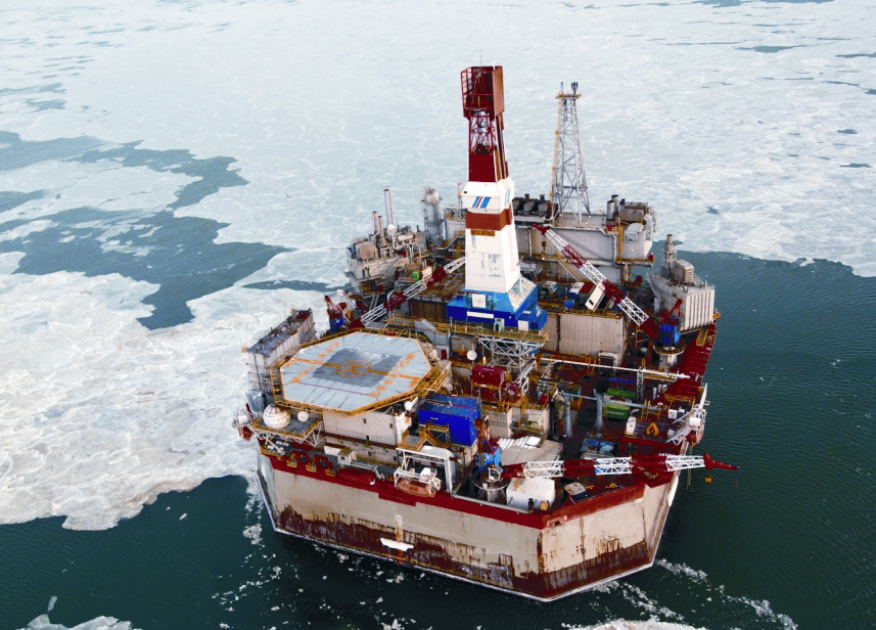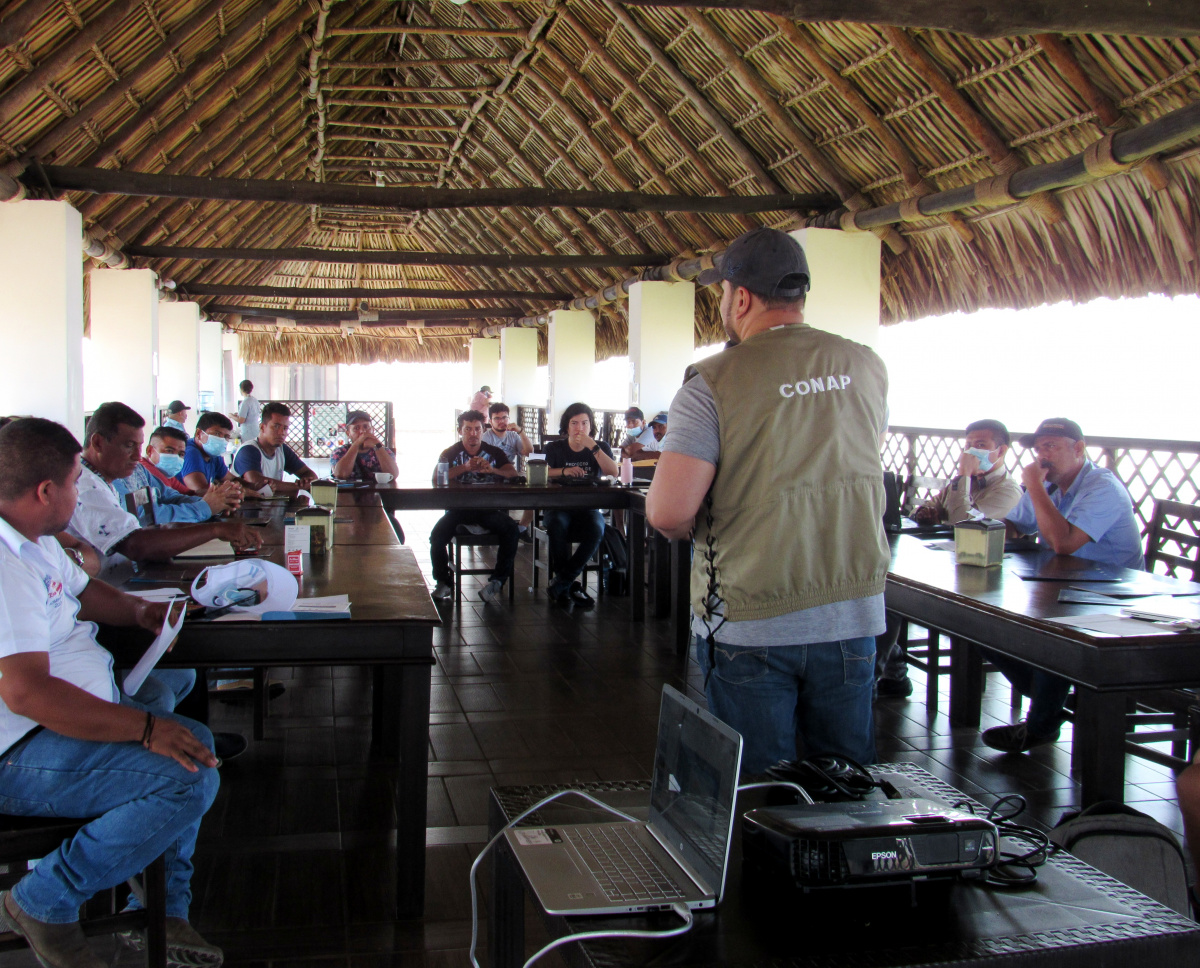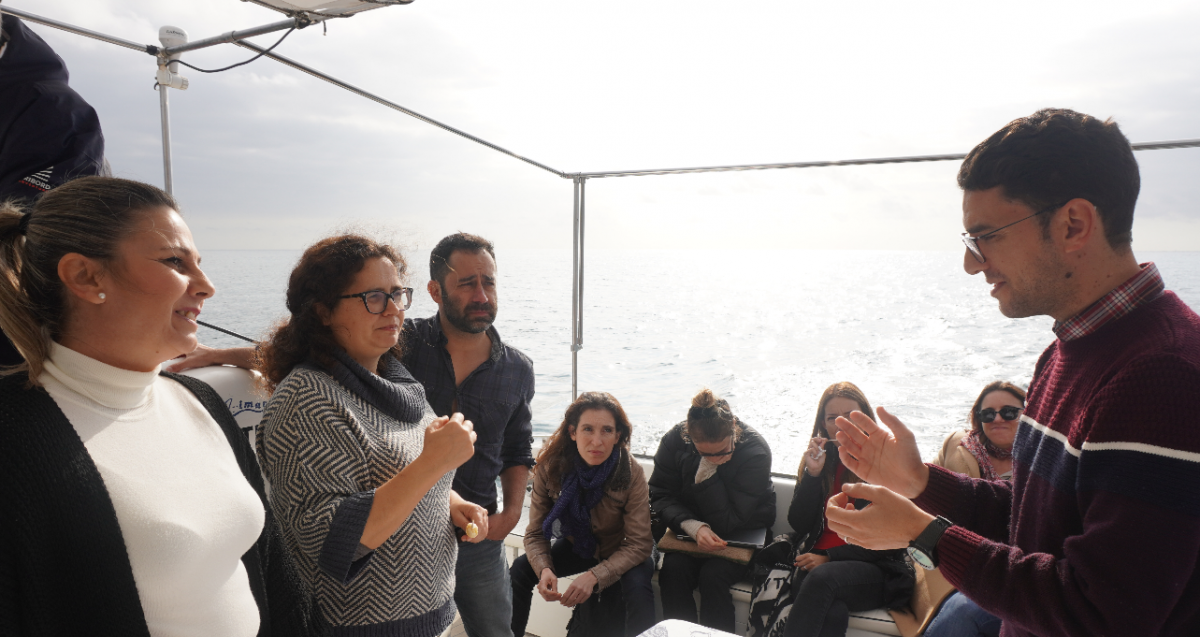Scientists work with oil consortium to limit effects of seismic work on critically-endangered whale population
A taskforce of whale and oil industry experts convened by IUCN have published a list of monitoring and mitigation measures aimed at minimising the impacts of a seismic survey off Sakhalin Island in eastern Russia scheduled for 2009.

Photo: Sakhalin Energy Investment Company LTD.
Sound energy from airgun impulses used in the survey are considered detrimental to the Western Gray Whale population that comes to this remote area to feed, but are necessary to characterise oil and gas deposits, and provide a basis for more efficient drilling, which in turn lowers the risk of environmental damage by reducing the number of wells drilled.
According to the independent Western Gray Whale Advisory Panel (WGWAP), this collaborative effort between experts from Sakhalin Energy and members of the panel is “not only a considerable amount of work, but it probably represents the most thorough work with respect to seismic surveys and cetaceans, in advance of the seismic field operations, yet undertaken anywhere”.
Based on the panel’s recommendation, Sakhalin Energy undertook technical research to determine whether it was possible to reduce the source energy – and thus the noise, compared to the 1997 baseline survey (which the 2009 survey is required to repeat as closely as possible). The results of this paper were further reviewed by an independent expert, contracted by IUCN. (Link to the independent review)
Minimizing the impacts of future seismic surveys was as important to the task force as looking at the 2009 survey. Special attention has been given to ensuring necessary data is collected to be able to further reduce and understand impacts of the noise on whales, and thus help set new standards of best practice in the future.
The Seismic Report follows hot on the heels of the report on the 4th meeting of the WGWAP in Lausanne, Switzerland, which provided more recommendations for reducing industry impacts on the whales.
The Panel called on Sakhalin Energy to increase transparency by allowing an indepedndent observer to board their vessel during the 2009 seismic survey.
Among the other recommendations in the report was a call for more resources to be devoted to monitoring and research into the last remaining western gray whale population, thought to number about 130 individuals, including the development and completion of multi-year analyses in cooperation with IUCN.
The Panel welcomed news from Sakhalin Energy that plans to build waste-disposal facilities, to accommodate oily wastes in the event of an oil spill, were well advanced, but called for more information on the modelling of possible oil spills in relation to the whale’s feeding areas and migration routes.
More information:
Full report on the 4th meeting of the Western Gray Whale Advisory Panel
https://www.iucn.org/downloads/wgwap_4_report_final.pdf
The 4-D seismic Task Force held its second workshop in Lausanne, Switzerland, from March 13-16, 2008.
The Western Gray Whale Advisory Panel held its 4th meeting in Lausanne, Switzerland, from April 22-25, 2008.



